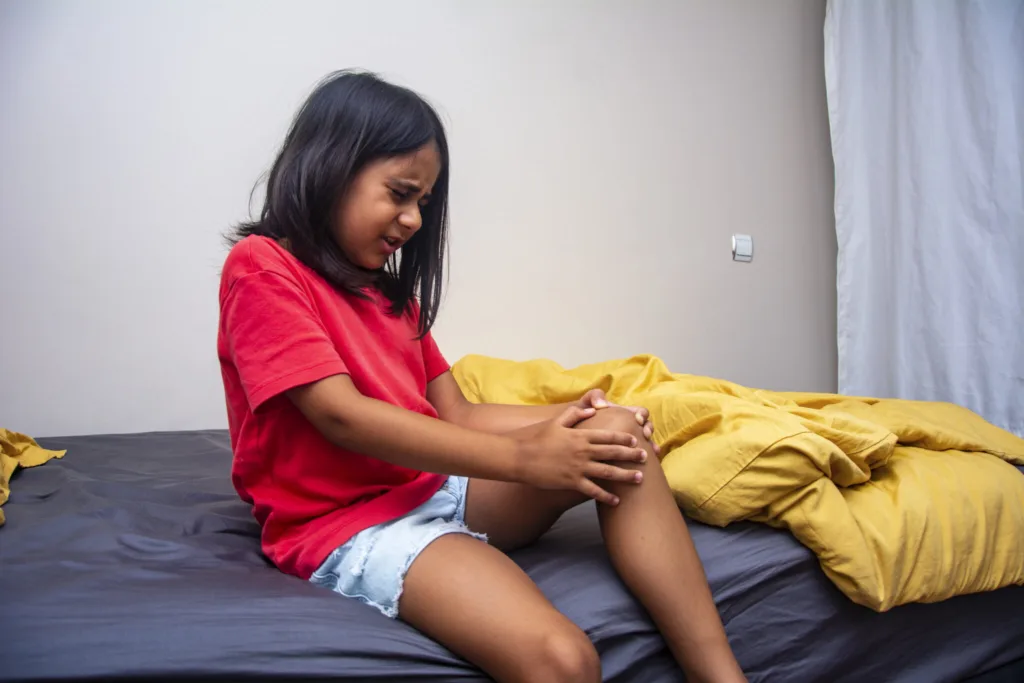Every June, Juvenile Arthritis Month shines a light on a condition that affects nearly 300,000 children and teens across the United States. While the word “arthritis” often calls to mind joint pain in older adults, juvenile arthritis is very real and an often misunderstood challenge that young people and their families face each day. Raising awareness is not just about sharing facts; it’s about fostering empathy, support and hope for children navigating life with chronic pain.
This blog explores what juvenile arthritis is, signs every parent and caregiver should know and proven ways families, communities and advocates can offer support. Whether you’re a parent, teacher or friend, learning more is a vital first step in making a difference.
Understanding juvenile arthritis
Juvenile arthritis (JA) isn’t a single disease, but rather an umbrella term for a group of autoimmune and inflammatory conditions that can develop in children under the age of 16. The immune system, which usually protects the body from germs, becomes confused and mistakenly attacks healthy joint tissues. This causes joint pain, swelling and stiffness and can sometimes lead to long-term joint damage.
Types of juvenile arthritis
Juvenile idiopathic arthritis
The most common type of JA, juvenile idiopathic arthritis (JIA), is diagnosed when a child under 16 has symptoms that persist for more than six weeks and have no other clear cause. JIA can include oligoarticular arthritis (few joints), polyarticular arthritis (many joints) and systemic arthritis (affecting joints and other organs).
Fibromyalgia
Fibromyalgia is a chronic pain syndrome that can cause widespread muscle pain and stiffness, along with fatigue, disrupted sleep and other symptoms. It is more common in girls but rarely diagnosed before puberty.
Juvenile dermatomyositis
Juvenile dermatomyositis is a rare form of juvenile arthritis that involves muscle weakness and skin rashes.
Juvenile lupus
Juvenile lupus is an autoimmune disease affecting joints, skin, kidneys and other organs.
Juvenile scleroderma
Juvenile scleroderma causes skin and connective tissue to harden and tighten.
Vasculitis
Vasculitis inflames the blood vessels, affecting blood flow.
Recognizing the signs
Juvenile arthritis does not always announce itself loudly. Sometimes, its symptoms can be subtle or mistaken for growing pains, sports injuries or other common childhood aches. Here are some key signs to watch:
- Persistent joint pain, swelling or stiffness (often worse in the morning or after rest)
- Limping (especially in younger children, who may not verbalize discomfort)
- Unexplained fevers
- Fatigue or irritability
- Rash, especially in systemic forms
- Reduced range of motion in joints
If you notice any of these symptoms lasting several weeks, it’s best to consult with a healthcare professional. Early detection leads to better outcomes and helps children stay active and engaged.
How juvenile arthritis affects daily life
Living with juvenile arthritis is more than managing joint pain. It can touch every aspect of a child’s life.
School and social activities
Kids with JA may need extra time to get ready in the morning, may find it hard to keep up with sports or playground activities and sometimes face absences for medical visits.
Mental and emotional well-being
Chronic illness can take a toll on a child’s self-esteem and mood. Pain flare-ups, fatigue and missing out on milestones can be discouraging. This can lead to feelings of frustration or isolation. Creating a supportive, understanding environment at home and school goes a long way.
Treatment and management
Managing juvenile arthritis often requires a partnership between the child, their family and a dedicated care team. Treatments may include medication (to control inflammation), physical therapy (to maintain mobility), occupational therapy (for daily tasks) and sometimes surgery. With the right care, most children can lead healthy, active lives.
Supporting children and families
Supporting children with JA is truly a team effort, and there are meaningful steps everyone can take to enrich their quality of life. For parents and families, working closely with pediatric rheumatologists and a care team can help kids receive thoughtful and tailored support.
Encouraging open conversations about pain or discomfort lets children know it’s okay to speak up while helping them explore activities that suit their abilities and fosters confidence and joy.
Connecting with support groups can also offer fresh insights, encouragement and a sense of community. Schools and community groups play a vital role, too.
Providing classroom accommodations like extra time for assignments or rest breaks makes learning more accessible. Educating classmates enhances understanding and helps prevent teasing or misunderstandings, while adaptive sports or inclusive play allow every child to shine at their own pace.
Friends and allies make a difference by inviting children with JA to participate in group activities, even if adaptations are needed. A listening ear and a simple message of encouragement can go a long way, reminding every child that they are not alone and are valued just as they are.
Promoting awareness during juvenile arthritis month
Juvenile Arthritis Month is a meaningful opportunity to shine a light on the challenges faced by children living with arthritis. By spreading awareness, we not only educate others but also help create a more supportive and inclusive community. There are many ways to get involved from wearing blue or a JA awareness bracelet, to sharing stories and information on social media using #JuvenileArthritisMonth. Attending local JA walks, participating in fundraising events or volunteering with organizations like the Arthritis Foundation can also make a real difference. Every effort, big or small, helps children and families coping with juvenile arthritis feel seen, heard and less alone on their journeys.
Maxim Healthcare understands the unique needs of families caring for medically fragile children. Our nurses and caregivers support your child’s health and help them participate in activities. Visit our pediatrics page to learn more about our services and contact your local Maxim office for more information.

